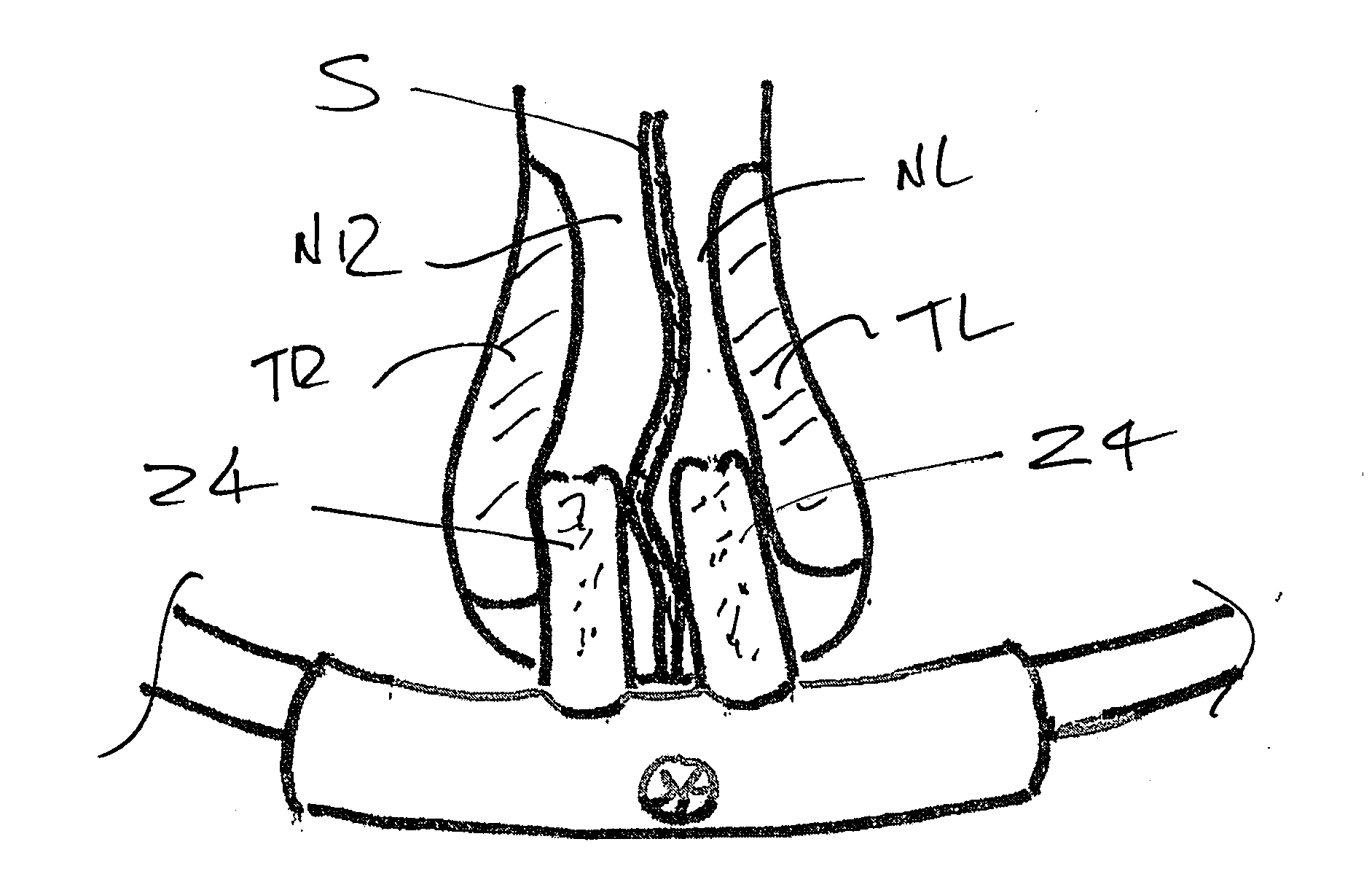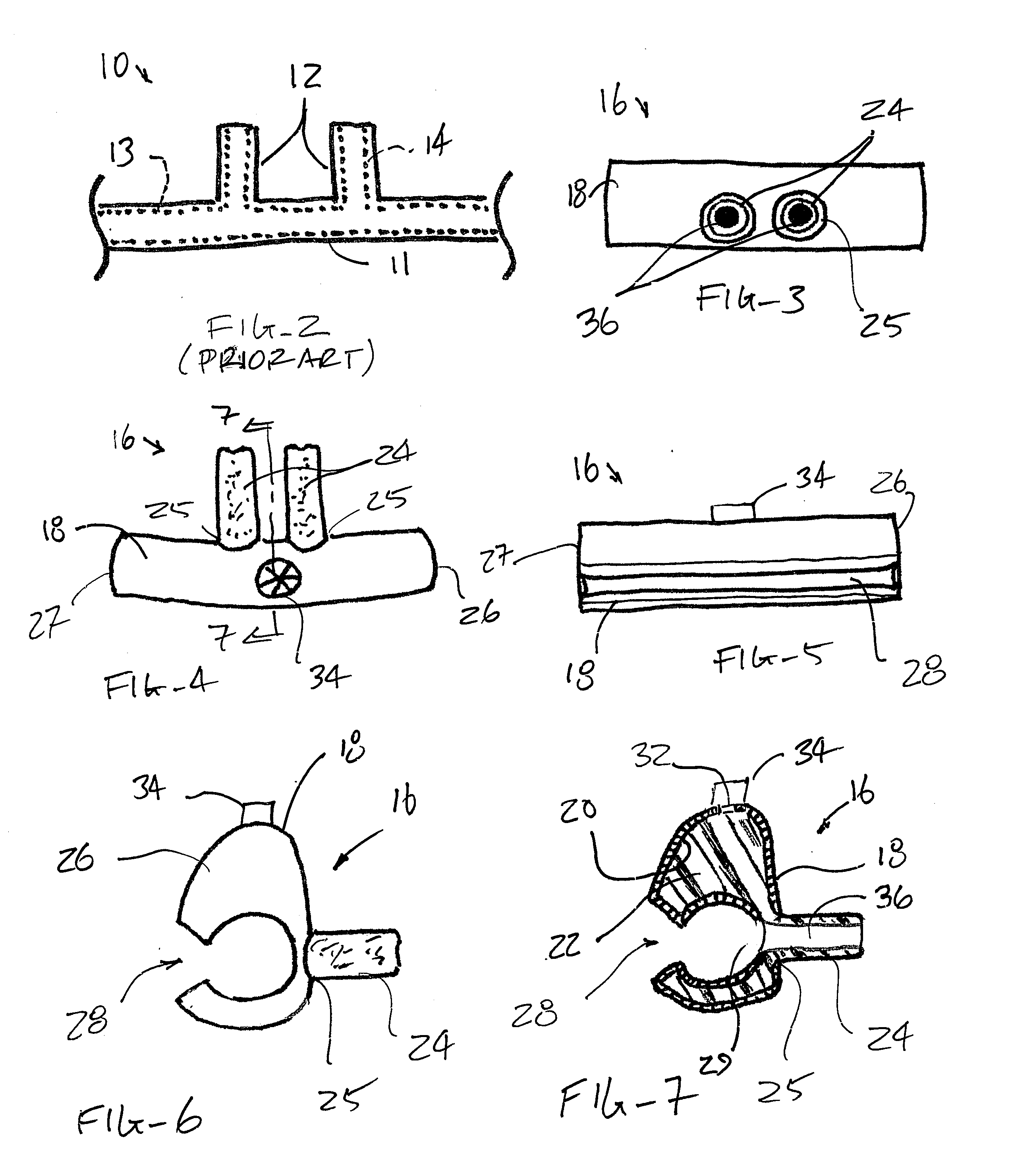Clip-on nasal air humidifying and epistaxis-prevention device and methods for use with supplemental oxygen
a technology of epistaxis and humidification device, which is applied in the direction of respiratory mask, medical device, other medical device, etc., can solve the problems of excessive drying of mucosal membrane, ulceration of nasal passage, and impairing normal blood clotting, so as to avoid direct trauma and abrasion of the mucosa
- Summary
- Abstract
- Description
- Claims
- Application Information
AI Technical Summary
Benefits of technology
Problems solved by technology
Method used
Image
Examples
Embodiment Construction
[0023]A disposable device is described which clips or otherwise attaches onto a conventional, commercially available supplemental nasal oxygen cannula to moisturize the nasal mucosa as the patient breaths oxygen being delivered by the cannula. This device reduces / prevents nosebleeds associated with the use of supplemental oxygen. The device structure typically includes a sponge or other liquid absorbing material or mass and is designed to clip over the nasal prongs of a supplemental oxygen cannula. Common nasal saline solution or bacteriostatic / bactericidal solution can be used to moisturize the nasal sponges, and oxygen flowing through the nasal prongs carries the moisture from the sponge to the nasal membranes. In addition, the sponge typically covers the nasal prongs and releases or transfers the saline or other moisturizing liquid directly into the nasal air and further holds the prongs away from the nasal septum, minimizing or preventing ulceration of the delicate nasal mucosa....
PUM
 Login to View More
Login to View More Abstract
Description
Claims
Application Information
 Login to View More
Login to View More - R&D
- Intellectual Property
- Life Sciences
- Materials
- Tech Scout
- Unparalleled Data Quality
- Higher Quality Content
- 60% Fewer Hallucinations
Browse by: Latest US Patents, China's latest patents, Technical Efficacy Thesaurus, Application Domain, Technology Topic, Popular Technical Reports.
© 2025 PatSnap. All rights reserved.Legal|Privacy policy|Modern Slavery Act Transparency Statement|Sitemap|About US| Contact US: help@patsnap.com



